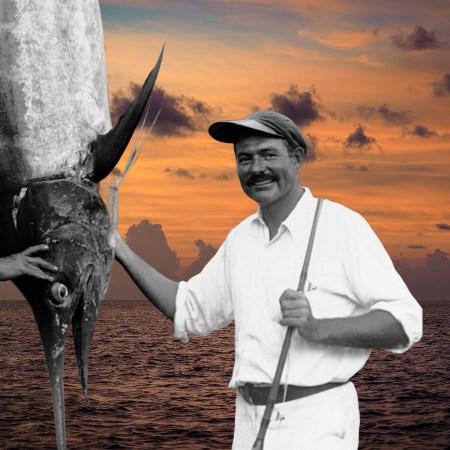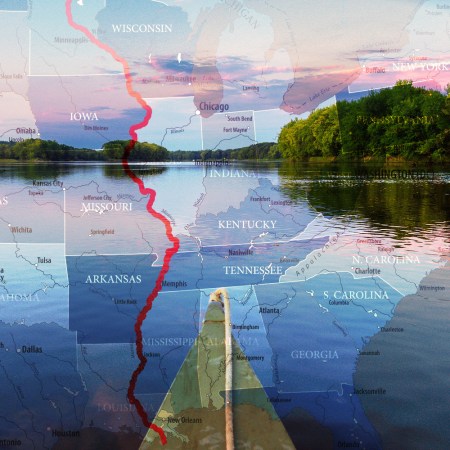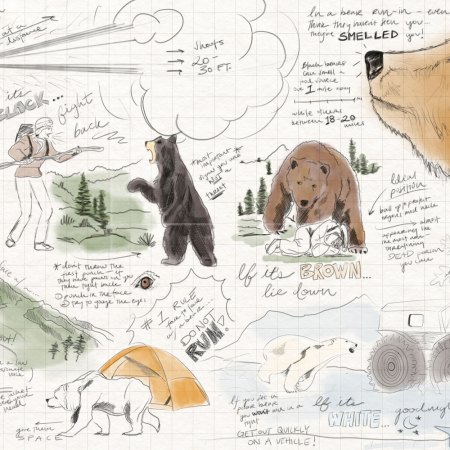Over the past 45 years, in a career that has taken him from the jungles of Colombia to the forests of Gabon, Alan Carle has been threatened by an armed group posing as drug enforcement agents, had his plane stormed by the military, met the Fulani tribe in the Central African Republic, discovered a “lost” species of ginger in northern Malaysia and canoed alongside pink river dolphins in southwestern Brazil.
It’s a résumé that has seen him hailed as a modern-day Indiana Jones. Though it isn’t ancient relics, shiny statues or rare stones for which Carle risks his life, but something equally as important, and equally in need of preservation. As the cofounder of Australia’s Botanical Ark, Alan and his wife Susan have made it their life’s mission to collect and protect some of the planet’s rarest flora, specializing in fruits most of us have never heard of, let alone tasted.
Over the course of 100 collecting trips across 40 nations, Alan and Susan have hunted everything from the plum-colored flowers of the Herrania tree in South America (a close relative of cacao) to an Amazonian cousin of the Brazil nut called sachamango, as well as a wild relative of jackfruit in the genus Artocarpus found in the jungles of Borneo — all with the aim of raising awareness of the value of biodiversity, the myriad ways rainforests support human life and what needs to be done in order to protect them.
“Our overarching goal in life is to see the rainforests, that provide all of us with so much, from being destroyed,” Alan says via email. He describes the Botanical Ark as “ethno-botanical gardens.”
Despite our correspondence lasting the better part of a year, Alan’s schedule only allows us to speak once. “I’m a quick learner, but until now have only gone on Zoom calls with my wife — she knows what to do,” Alan, who is approaching his 74th birthday, informs me. “I do know how to travel to strange places and collect and grow plants, though.”

For much of his life, Alan has ventured into the fuggy depths of the planet’s tropical regions, seeking out plants that indigenous rainforest cultures use for their food, spices, shelter, medicine, cosmetics, fibers, oils and dyes. As an individual entity, he is largely able to travel where governments cannot, and says he has been welcomed onto the land and into the homes of local tribespeople, including native Amazonian groups.
“I’ve worked very closely with traditional owners overseas,” Alan told the Australian Broadcasting Corporation (ABC) in 2023. “You need to really get their permission before you can collect things and bring things back. From the Pygmies…to local people in Madagascar…they have so much to teach us.”
It’s been a lifelong calling. Growing up in New York State before emigrating to Australia in 1970, Alan says he was born in the wrong country, but always knew where he belonged. “As soon as I was old enough, I bought a one-way ticket [to Australia]…and I’ve been here for 53 years now,” he told ABC.
He had met his wife Susan back in the U.S. In Australia, the two expats were free to explore a shared passion. Around this time, Dr. Peter Raven, a prominent American botanist, gave a speech in which he claimed that 20% of all life on Earth might be lost in the next quarter century. Its impact on Alan and Susan was profound.
“Suzi and I read the report…and thought if his estimations were remotely possible, the world would be losing something very important,” Alan writes on the Botanical Ark’s website. “We were determined to do what we could to help raise awareness of this impending loss.”
A Skeptic’s Trip to the Heart of Ayahuasca Tourism
Why are veterans, psychologists and lawyers traveling to Costa Rica to drink a hallucinogenic brew that’s illegal in the U.S.? Kinga Philipps joined them to find out.Their collecting expeditions began with local nurseries, from which they’d lug back the occasional mango, jackfruit and avocado trees. More often, though, despite Queensland’s tropical climate, the fruits on offer were slightly more drab and Western in taste — a result of the “botanical imperialism” from Australia’s days as a British colony.
“We lived in the tropics and they were trying to sell apples, pears, peaches and grapes,” Alan says.
Looking to broaden the palette of his adopted nation, he reached out to the government’s agricultural quarantine department, enquiring about the legality and logistics of importing tropical seeds. He learned that the Queensland Acclimatisation Society had tried to do just that in the 1800s, as had the Department of Primary Industries, located near Cairns, the gateway to the country’s Great Barrier Reef. The great majority of these attempts were unsuccessful, but Alan was undeterred.
“There was this impetus with a whole new generation of people keen to try new fruits and new crops,” he says.
Looking to galvanize this collective interest, he called the first meeting of the Rare Fruit Council of Australia in 1979. The council had 1,200 members in its heyday, located all across the country, with hundreds of people attending meetings in order to learn about new fruits. “It was amazing,” Alan recalls.
The trouble was, few of these fruits grew in Australia. In order to really learn about exotic fruits — and crucially, to see which might flourish down under — Alan and Susan decided to hit the road. Their first proper collecting trip lasted 11 months and followed the fruiting season across the Pacific, then south through Central America and into the Amazon, with a brief stop in Florida. Back home, they worked with quarantine officials to ensure everything was done legally, and the risk of pests and disease was kept to a minimum.

It wasn’t until 1982 that they began their Botanical Ark project in earnest, purchasing an eroded, weed-strewn, treeless scrap of land once used for sugar-cane farming and then to raise cattle. Days of digging up rocks turned to years, while millions of earthworms were brought in to help replenish the topsoil, and finally trees to hold the soil in place. And as the Carles’ trips continued, the garden grew.
Today, the Botanical Ark is an eight-hectare research garden. Alan estimates that he and Susan have imported some 3,000 species over their decades of work, but some simply did not grow, while others were lost in cyclones or floods. Of the 2,000 or so exotic species that did take root, many were duplicated and shared with colleagues in botanical institutions in other parts of the tropics. In Queensland, guests are able to book private tours of the Botanical Ark through an agent, which allows them to experience some of the most “unusual and interesting tastes and sights imaginable.”
“When guests visit I explain why we do what we do, then we meander through the garden as I introduce some of the incredible species of plants the rainforest has to offer,” Alan told Australian Wildlife Journeys. “No matter where we live, we depend on some plants from the rainforests, and all of the plants Susan and I cultivate are useful — for fibers, dyes, cosmetics, food and medicinal purposes.”
A standout is Bixa orellana, or achiote, a shrub native to Central America, which grows gem-like clumps of fruit resembling spiky strawberries and is used as a natural coloring agent in fruit juices and sauces.
Some plants are more familiar, although visitors might not appreciate the full range of their uses. Clove is a spice, but is also used by native peoples as a local anesthetic, and is a strong antiseptic. Meanwhile, Alan considers breadfruit “one of the most useful food plants we have. A single tree can sustain one family’s carbohydrate needs for a whole year.”
For some, the Botanical Ark is a thought-provoking field trip. For Alan and Susan, the lessons they teach are hard-won. Reading through his journals one day, Alan offers me a “small taste” of the scrapes he has found himself in, including braving malaria on what seems like a near-constant basis, and rounding a corner in Guatemala City during the country’s civil war and walking into the barrel of a semi-automatic rifle held by “a very young and startled soldier.”
“The only thing I’m really frightened of is people with guns,” he told ABC.
The standout has to be his brush with a man-eating tiger in the late 1980s. In search of Amorphophallus titanum, the rancid-smelling “corpse flower,” he traveled an hour and a half into the bush outside of Bukittinggi, a city in western Sumatra.
“That forest had known tigers in it that were killing people in the local villages,” he explains.
Nine people had been killed that year and the locals were understandably reluctant to venture into the jungle. Undeterred, Alan wore a Chinese mask on the back of his head, putting his trust in the rumor that a tiger will never attack someone looking at it. He doesn’t know if he came close to death that day or not, but the ruse worked, and he got his plant.

These days, it isn’t just belligerent wildlife he has to contend with, but the complexities of modern bureaucracies. “Everything has become much more difficult, and sometimes more dangerous,” he says. “Instead of dealing with local tribal elders and communities, one now has to plan months, if not years, ahead, and deal with bureaucrats, military and politicians.”
As he enters his mid-70s, Alan’s trips into the jungle have become rarer. In their place, he and Susan continue to serve as advisors to governments and private organizations on land management and regeneration issues, as well as their own conservation projects, including assisting with the design and implementation of the Ginger Garden — which is based within the historic Singapore Botanic Gardens.
In Malaysia’s Sabah Agriculture Park, they assisted with collecting and donating trees; on the Ivory Coast, they’ve advised growers of tropical flowers; and in South America, they’ve worked on projects with Reserva Rio Guaycuyacu disseminating tropical fruits to growers in Ecuador and elsewhere on the continent.
Alan does not rule out another adventure in search of his particular treasure but, like many people their age, he and Susan have plenty to keep them busy in their own garden.
Whether you’re looking to get into shape, or just get out of a funk, The Charge has got you covered. Sign up for our new wellness newsletter today.

























